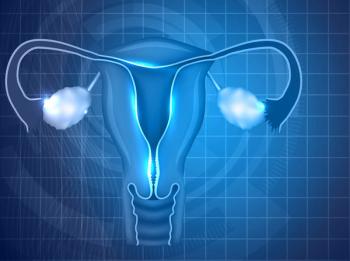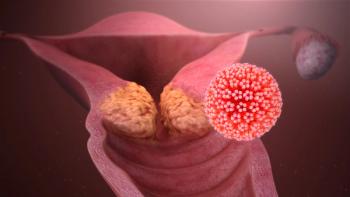
Oncology NEWS International
- Oncology NEWS International Vol 13 No 8
- Volume 13
- Issue 8
Amifostine Provides Mucosal Protection in HNC Patients Treated With Chemoradiotherapy
The 14 reports in this special supplement discuss theuse of the cytoprotectant amifostine in patients withcancer of the head and neck, esophagus, lung, andcervix, as well as those with lymphoma and acutemyelogenous leukemia. Discussions focus on thepotential of this agent to both reduce radiation sideeffects such as xerostomia and permit doseescalation of chemotherapy and/or radiotherapy.Improvements in treatment outcome and quality oflife as a result of cytoprotection are examined.
MONTEGO BAY, JAMAICA-"Weekly carboplatin (Paraplatin)and paclitaxel (Taxol) given concurrentlywith definitive radiotherapyand daily amifostine (Ethyol)was well-tolerated by patients withadvanced squamous cell head andneck cancers, and the cytoprotectiveagent amifostine appearedto decrease treatment-relatedtoxicity," according to MohanSuntharalingam, MD, vice chairof radiation oncology at the Universityof Maryland GreenebaumCancer Center, Baltimore. Dr.Suntharalingam reported datafrom a prospective phase II trialevaluating the role of amifostinewith this concurrent chemotherapyregimen at the 4th InternationalCytoprotection Investigators'Congress.Chemoradiation Doubles Toxicity"Few solid tumor sites haveshown such good outcomes withcombination radiation and chemotherapyas head and neck cancers,and combined-modality therapy ishere to stay," Dr. Suntharalingamsaid. However, he noted that theregimens can result in a doublingof the rates of grade 3 or 4 mucosaltoxicity, from about 24% with eitherchemotherapy or radiotherapyalone to about 43% with thecombination. To address thatproblem, he and his colleagues conducteda prospective phase II trialto determine whether adding thecytoprotective agent amifostinecould reduce mucosal toxicitywithout reducing tumor response.
Dr. Suntharalingam reporteddata for 60 evaluable patients withunresectable stage III or IV squamouscell carcinomas of the heador neck. Patients were treated withdaily radiation to the primary siteup to 70.2 Gy (1.8 Gy/d) deliveredwith the shrinking field technique.Clinically involved nodes receivedthe full dose, while uninvolvednodes received up to 50.4 Gy.Amifostine 500 mg IV was givenless than 1 hour prior to radiotherapy.Concurrent weekly chemotherapycomprised of carboplatin100 mg/m2 as a 30-minute infusionto AUC 1.5 and paclitaxel 40mg/m2 IV as a 3-hour infusion.Majority RespondedDr. Suntharalingam reportedthat 82% of patients had completeresponses (CR) at the primary site,and pathologic examinationshowed a CR rate of 73% in nodepositivepatients. "Overall, 75% ofpatients had no evidence of diseasefollowing therapy," he said.Sixty percent of patients requiredtreatment breaks, with amedian duration of 1 day. Breakswere most often secondary to nausea/vomiting (36%), dehydration(18%), dermatitis (11%), mucositis(5%), or neutropenia (5%).Most patients received all planneddoses of amifostine. Three patientsdiscontinued amifostine becauseof hypotension or nausea andvomiting."It feels as if we are getting moretherapy into these patients [withamifostine]," Dr. Suntharalingamsaid. He reported that the frequencyof grade 3 xerostomia was 20%with amifostine, and noted thatthere was also only 20% grade 3skin toxicity (no grade 4 toxicity).With regard to nonhematologictoxicities, patients who receivedamifostine seemed to experiencetoxicity later in the treatment periodand require fewer treatmentbreaks, Dr. Suntharalingam said(see Figure 1).Leukopenia was somewhathigher with amifostine, but therewas no decrease in efficacy."Radiotherapy plus weekly carboplatin/paclitaxel is a well-toleratedoutpatient regimen with a completeresponse rate of 75% and anoverall 5-year survival of 38%,"Dr. Suntharalingam concluded."Initial experience with the additionof amifostine suggests a benefitin terms of mucosal protectionand xerostomia, while maintainingefficacy."
Articles in this issue
over 21 years ago
Benefits of SLN Biopsy Upheld in Large Trialover 21 years ago
Gemcitabine/Taxol: Another New Standard in Metastatic Caover 21 years ago
Statins Cut Colon Ca Risk in Half in Retrospective Studyover 21 years ago
Breast Cancer Regimen Is Dose Dense, Dose IntenseNewsletter
Stay up to date on recent advances in the multidisciplinary approach to cancer.

















































































